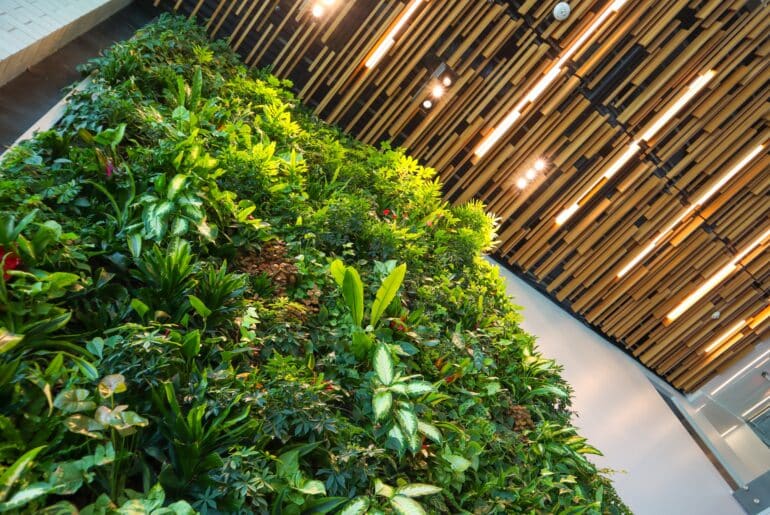Over the last decade, the green building industry has matured and earned respect. While it’s excelled in reducing buildings’ environmental impact, it’s largely ignored the most dynamic aspect of buildings—the people who work, live, heal, play, learn, exercise, dine, and rest inside.
Luckily, that time is coming to an end. The green building dialogue is decisively shifting toward one of healthy, high-performing buildings—with human health, well-being, and productivity as central tenets of a more robust and holistic industry.
Designing, building, and operating buildings to promote positive health outcomes is now possible on a wide scale via the new WELL Building Standard, a first-of-its-kind standard focused entirely on building occupants.
The Standard was formed over seven years through unprecedented collaboration between experts from disparate fields—from physicians and wellness specialists to interior designers and building scientists. Although WELL stands on the shoulders of giants (there’s been decades of research at the intersection of human health and the built environment), the Standard is rapidly bringing buildings’ effect on human health into the spotlight in a way that pure research never could.
Think of the Standard as a prescription for a building, written to have a positive effect on all inside. When followed, the result is a space that positively impacts occupants’ nutrition, fitness, mood, sleep, and comfort. This is accomplished by integrating strategies, programs, and technologies that promote inhabitants to exercise, rest, and be active while simultaneously removing buildings’ harmful chemicals and air and water pollutants.
This is a crash course in the structure and applicability of the Standard, here to help you begin to get familiar with this wellness revolution in the green building movement.
Standard structure
Let’s quickly sift through the structure of the Standard. The WELL Standard is divided into seven exciting new categories, called Concepts: Air, Water, Nourishment, Light, Fitness, Comfort, and Mind. Each of these seven Concepts is further broken into Features, with a total of 102 Features in version one of the Standard.
For those familiar with LEED, Features are like credits, and contain performance metrics, design strategies, and operational policies implemented by the design team, contractor, occupants, and/or operators. Features are either “preconditions” (requirements) or “optimizations” (optional), but note that a precondition for one typology may be an optimization in another.
Furthermore, Features contain one or more Parts; all Parts of a Feature must be met in order to earn that Feature. However, every Part of a Feature may not be applicable; it depends on typology or building use type. There is often more than one option for how requirements of a Part can be met.
Applicability and actions
Who’s able to apply? The current WELL Standard was designed to be applicable to commercial offices applies to three typologies: new and existing buildings, new and existing interiors, and core and shell. The Standard was designed to be applicable to commercial offices. However, there are currently five pilot programs available for use today that “plug into” the Standard and make it applicable to other building use types.
Once you’ve applied, just like a checkup at the doctor’s office, buildings attempting the WELL Standard must undergo assessment and performance testing by a third party before being awarded WELL Certification. Furthermore, WELL buildings require regular checkups, undergoing re-certification every three years to keep their title.
WELLcome to the future of green building
The WELL Standard is pioneering an immense shift in the green building industry, and those that don’t get on board quickly may be left behind. While the Standard may represent uncharted territory for most, it’s quickly gaining traction and becoming a familiar term among industry professionals.
Sustainability is as much about people as it is about the environment. Inextricably linked, our built environment must reflect this connection and aim to nurture both. While sustainability in the built environment has until now focused on the natural environment—hence green building—the WELL Standard brings people to the forefront of the conversation, equipped with the potential to heal humanity.
Interested in understanding how your project can achieve WELL Certification? Reach out to one of our healthy building experts to learn more!



